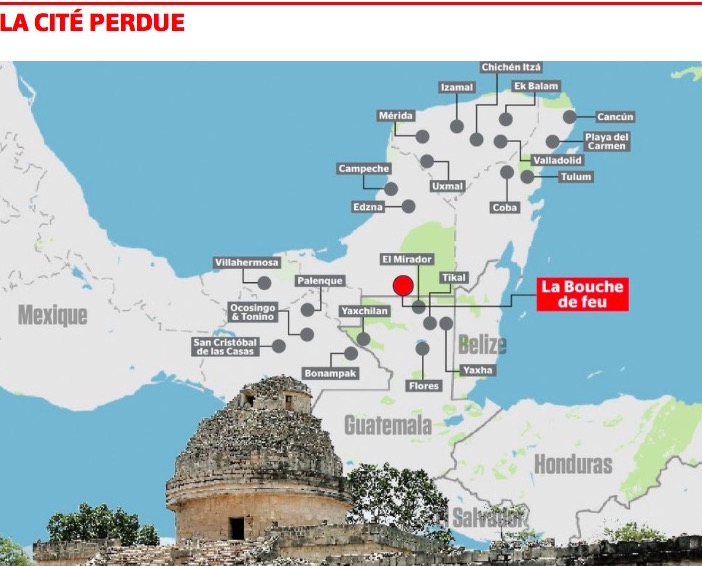 A 15-year-old from Quebec, Canada, has pinpointed the location of a lost Mayan city, and he found it by looking at the stars.
A 15-year-old from Quebec, Canada, has pinpointed the location of a lost Mayan city, and he found it by looking at the stars.
A 15-year-old boy believes he has discovered a forgotten Mayan city using satellite photos and Mayan astronomy.
Maya civilization chose the location of its towns and cities according to its star constellations.
He found Mayan cities lined up exactly with stars in the civilization’s major constellations.
Using satellite images provided by the Canadian Space Agency and then mapped on to Google Earth, he discovered the city where the third star of the constellation suggested it would be.
YucutanExpatLive.com continues the story:
William Gadoury, 15, has received accolades by NASA, the Canadian Space Agency and the Japanese Space Agency, and his discovery is about to be disseminated in a scientific journal.
Passionate about the lost Mayan civilizations for several years, Gadoury analyzed 22 Mayan constellations and realized that if he connected on a map the stars of the constellations, the shape of each corresponded to the position of 117 Mayan cities. No scientist before had ever found such a correlation between the stars and the location of the Mayan cities.
In 2005, the forest in this particular area was devastated by fire, making Mayan ruins more visible to satellite photographs. Analyses from satellites from various space agencies have revealed that there was indeed a pyramid and thirty buildings at the precise location identified by the young man. Not only has he discovered a new Mayan city, but it is one of the five largest on record.
He named this lost city K’àak’ Chi’ or “fire mouth.”

How’s your high school French? Read all about it in Le Journal de Montreal, the source of this screencap:
Les experts et scientifiques sont unanimes. La découverte de William Gadoury est exceptionnelle.
«Ce qu’il y a de fascinant dans le projet de William, c’est la profondeur de sa recherche. Faire le lien entre la position des étoiles et la localisation d’une cité perdue et l’utilisation des images satellitaires sur un tout petit territoire pour y déceler des vestiges enfouis sous une végétation très dense, c’est tout à fait exceptionnel!» a dit Daniel De Lisle, de l’Agence spatiale canadienne. Il a d’ailleurs remis une médaille de mérite au jeune homme.
L’Agence spatiale a contribué à l’avancement des recherches du jeune homme en fournissant des images satellites qui lui ont permis de trouver sa cité perdue.
Photos by the Canadian Space Agency CSA.

